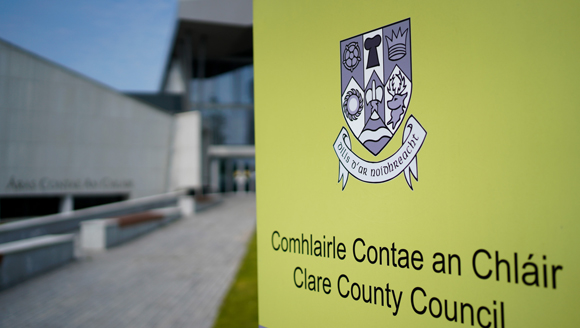AN Bord Pleanála has overturned the decision of Clare County Council in February to reject an application from Eircom for an 18-metre mast in Kilfenora.
The telecommunications company appealed that decision to An Bord Pleanála, who have now granted approval.
According to the original County Council decision, such developments can only go close to populated areas, but the An Bord Pleanála inspector was of the view that there had been a misinterpretation.
“In my opinion,” wrote the planning inspector, “the Planning Authority have incorrectly applied the appropriate ‘last resort’ test in this instance. The test they applied relates to ‘larger towns and in city suburbs’.”
The inspector was also of the view that the facility was required, due to the poor state of coverage in the area.
“I have reviewed ComReg’s online Outside Coverage Map1 for this area and note that for Ireland’s three main service providers coverage generally ranges from ‘Fringe’ to ‘No Coverage’ for 4G, from ‘Fringe’ to ‘Fair’ for 3G and from ‘Fringe’ to ‘Fair’ for 2G mobile services.
“In this regard I am satisfied that there is a clear need for improved mobile and associated broadband services in this general area.”
The inspector added, “In terms of the guidelines, I am satisfied the applicants have justified the need for a mast in the area and have demonstrated the absence of other masts in close proximity to meet their service requirements.
“As such I am satisfied the applicants have submitted a technical justification for the proposal and would reasonably meet the ‘last resort’ test for such free-standing masts to be located within villages such as Kilfenora.
“As a consequence of the above, a location for such a development within the Kilfenora Village area is in my view considered ‘necessary’ as per the guidelines.
“The applicants are proposing a site towards the southern edge/boundary of the village that is already developed and in use for ‘utility’ purposes. This accords with the ‘last resort test’ for smaller towns and villages.
“The proposed mast will be 18 metres high and will also provide co-location provision for other operators. As such it is clear the mast is not kept to the ‘minimum height consistent with effective operation’ and could be lower.
“However to reduce the height could create a scenario where competitors would look to cluster services or seek an alternative side within the village, both options needing an additional mast.
“A height of 18m and the ability for co-location for alternative operators is therefore, and in my opinion, preferable and in keeping with section 4.5 of the Guidelines i.e. ‘sharing of installations’.”
The inspector also found it would not impact on local scenery in an excessive way.
“In my opinion the site is not on a scenic route, important views from the scenic route do not necessarily include towards the subject application site, the site does not terminate the scenic route, any such view will be intermittent, incidental and with most viewers not facing the mast. Therefore, I do not consider the proposed development will impact significantly or be seriously detrimental to the scenic route.”
It found that the development would be more likely to add to the value of local property rather than reduce it.
“I note the concerns raised in the observations on file in respect of the devaluation of property in the area. However, having regard to this assessment and the distance between the proposed telecommunications structure and these properties, I am satisfied that the proposed development would not seriously injure the amenities of the area to such an extent that would adversely affect the value of property in the vicinity.
“In my opinion the provision of improved mobile and broadband services could have a positive benefit upon the valuation of some properties in the area.”
Planning permission was granted subject to six conditions.
by Owen Ryan

